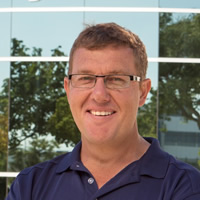Presented at NZ Hydrological Society Technical Workshop 17-20 March 2020
Abstract
GNSS survey techniques and post processing is dependent on the accuracy requirements of the survey and available correction services within the survey area. The decision on appropriate coordinate system and geoid for the survey is dependent on client requirements and historic survey information. Advanced hydrographic survey applications such as Hypack, has the ability perform datum transformations and for this reason it’s preferred to use the latest geodetic datum, NZGD2000 and vertical datum, NZVD2016 for bathymetric surveys.
The GNSS surveys techniques that are normally applied during topographic / bathymetric surveys comprises of static and real-time kinematic (RTK) surveys. Static surveys are used to established horizontal and vertical control and comprises of collecting minimum of 2 hours of raw GNSS data at a survey marker. The raw data is submitted to post processing service such as PositionNZ-PP or AUSPOS for processing of final position and height. Real-time kinematic surveys is the most accurate GNSS survey technique and are used for both topographic and bathymetric surveys.
The survey accuracy of both the topographic and bathymetric surveys was verified by surveying the established survey markers. The survey results obtained during the verification was compared against the results from PositionNZ-PP post processing. The difference between the two data sets should not exceed the accuracy level of RTK survey technique.
The survey process is divided into different components, depending on the survey technique used and the complexity of the survey, with the latter having the largest impact. Subdividing the survey area into separate components such as overland, top of bank, water edge, islands and bathymetric survey simplify and greatly reduce post processing.
Presenter bio
 Daniel started his hydrographic career at DWA in South Africa as a Civil Engineer Technician with experience in surface and ground water monitoring. He expanded his career of 31 years in Water Engineering and Hydrographic Operations by accepting the Manager of Water Monitoring Systems position (2008) at DLRM in Northern Territory. He made the conscious decision to further specialize in Water Engineering by accepting a position (2014) at SonTek in San Diego, USA. Daniel returned to Australia by accepting a Senior Hydrologist position (2018) at Xylem Water Solutions. Daniel holds a B.Sc. in Water Engineering from Central University Technology and B.Sc. in Geohydrology from Free State University.
Daniel started his hydrographic career at DWA in South Africa as a Civil Engineer Technician with experience in surface and ground water monitoring. He expanded his career of 31 years in Water Engineering and Hydrographic Operations by accepting the Manager of Water Monitoring Systems position (2008) at DLRM in Northern Territory. He made the conscious decision to further specialize in Water Engineering by accepting a position (2014) at SonTek in San Diego, USA. Daniel returned to Australia by accepting a Senior Hydrologist position (2018) at Xylem Water Solutions. Daniel holds a B.Sc. in Water Engineering from Central University Technology and B.Sc. in Geohydrology from Free State University.
Presentation
To watch the video, you will need your AHA member password sent to members by email

